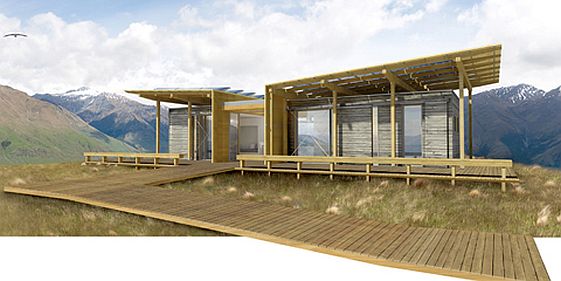Affordable warm, dry, energy efficient buildings
First Light solar bach, VUW.
While the residential sector is not one of the main users of energy it is a relatively large user of electricity (~30% of the total electricity consumption) and contributes to the morning and evening winter peaks. These are largely thermal loads (heating and cooking). Any moves to reduce these peaks because they tend to be serviced by fossil fules will impact on households.
Also, new constructions techniques, the progressive introduction of EVs, other forms of energy storage, and new transport and access technologies will all have a impact on the residential sector’s energy use patterns.
These changes will have different impacts on different sections of the community, and the changes will need to be manged to avoid adverse effects. This will raise issues that need to be considered in any energy research programme. But the concern about the peaks goes beyond a desire for stable low priced clean energy. The winter peaks are when New Zealanders who find energy difficult to afford most need it to stay warm and dry. Many live in rented properties and have limited flexibility to change their energy use, and will be late adopters of new energy technologies including EVs. Upgrade exisiting houses can be difficult. Much has been done to improve the historic energy weakness of our housing stock, but we need to find further low cost ways to keep our homes (particularly rentals) warm and dry, and to ensure that changes in the energy sector don’t further adversely impact upon these households.
